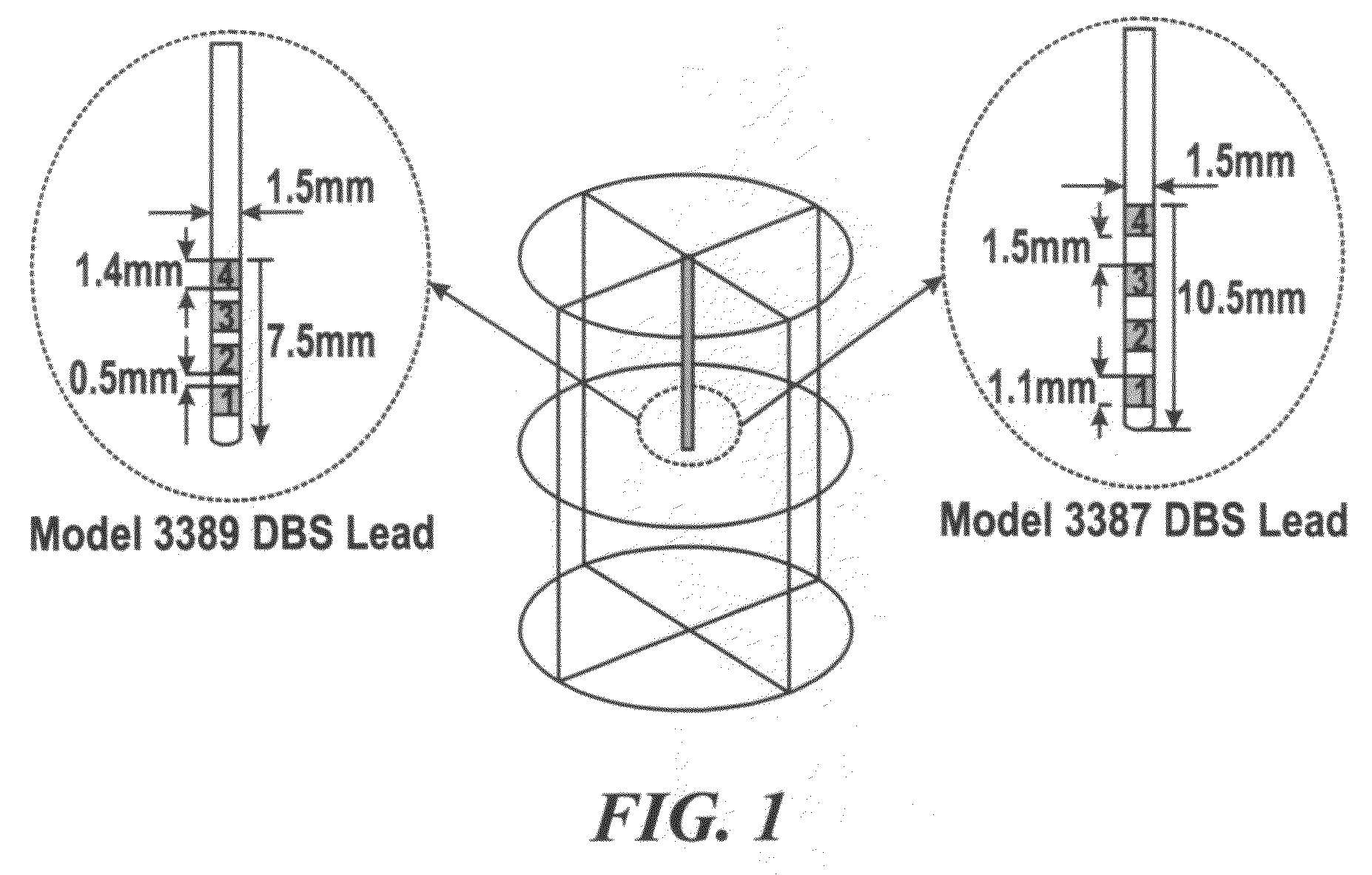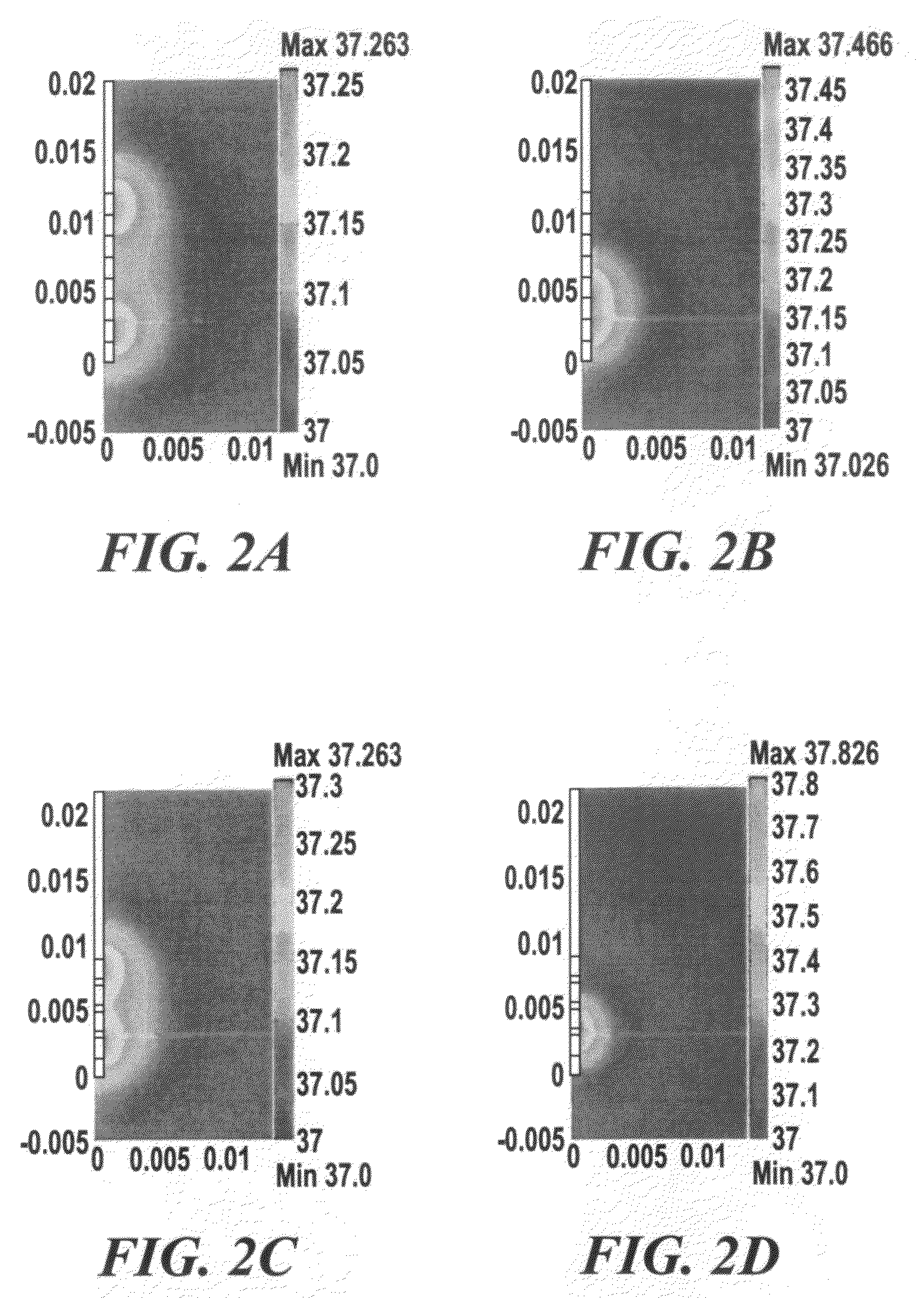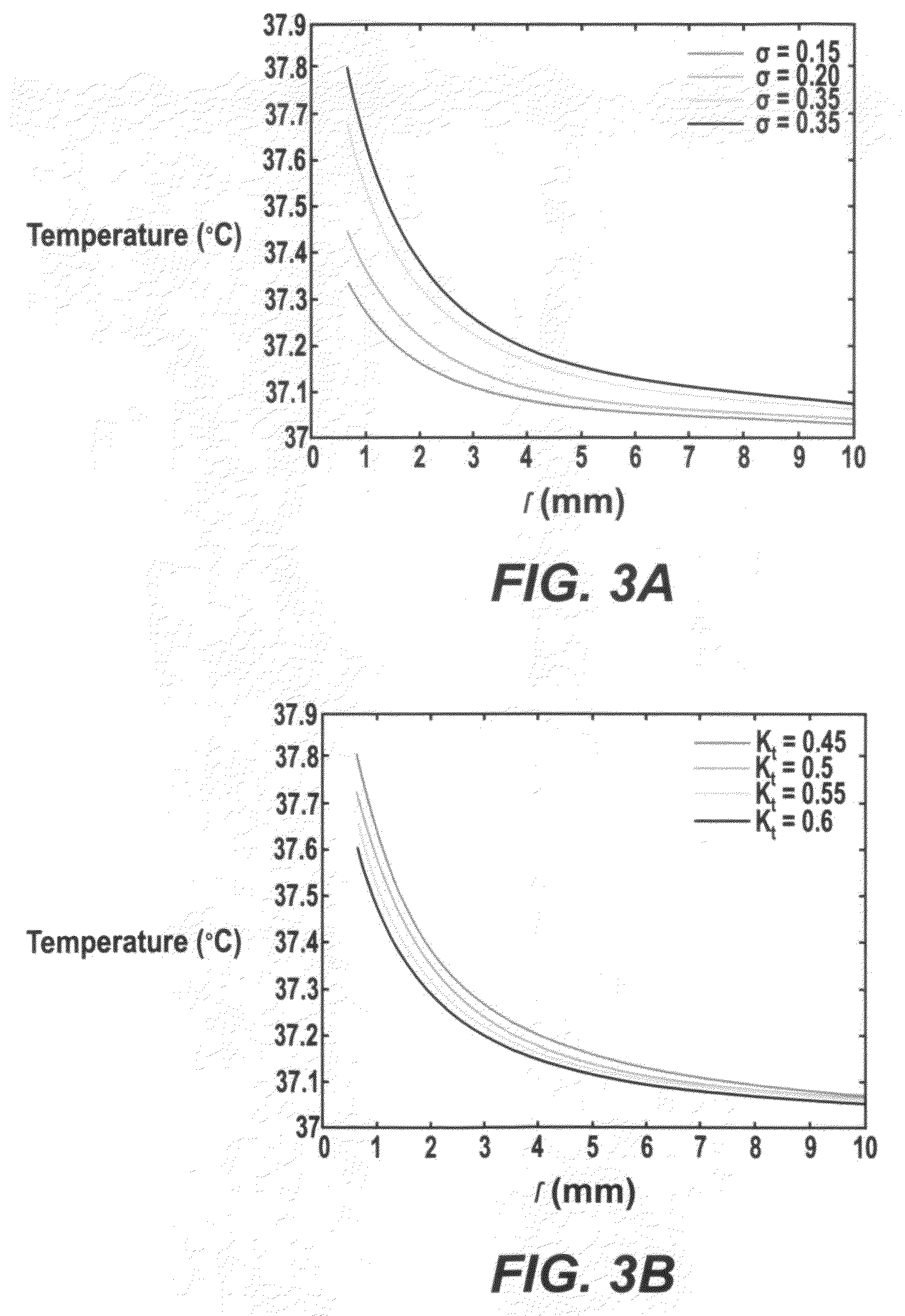Method to reduce heating at implantable medical devices including neuroprosthetic devices
a neuroprosthetic device and implantable medical technology, applied in the field of reducing heating at implantable medical devices including neuroprosthetic devices, to achieve the effect of reducing heating
- Summary
- Abstract
- Description
- Claims
- Application Information
AI Technical Summary
Benefits of technology
Problems solved by technology
Method used
Image
Examples
case 1
[0123]With Case 1, how the temperature increases solely in response to DBS-induced Joule heat was focused on, without modeling the contribution of blood perfusion or metabolic activity. Therefore, both ωb and Qm are zero. This model also treated the DBS electrode shaft to be electrically and thermally insulated, except that the electrodes 1 and 2—the two electrodes most distal on the DBS lead—were electrically energized.
[0124]The temperature distributions using two types of DBS leads—Medtronic DBS Lead 3387 and Lead 3389—were modeled. ‘High setting’ to the two DBS leads was applied and how electrical conductivity and thermal conductivity affected the resulting temperature distribution in the brain tissue was investigated. FIG. 3A and TABLE 1, SECTION I show changes in peak temperature and temperature field distribution as a function of tissue electrical conductivity (σ=0.15 to 0.35 S / m) with thermal conductivity (Kt) fixed at 0.527 W / m.° C. FIG. 3B and TABLE 1, SECTION II show chang...
PUM
 Login to View More
Login to View More Abstract
Description
Claims
Application Information
 Login to View More
Login to View More - R&D
- Intellectual Property
- Life Sciences
- Materials
- Tech Scout
- Unparalleled Data Quality
- Higher Quality Content
- 60% Fewer Hallucinations
Browse by: Latest US Patents, China's latest patents, Technical Efficacy Thesaurus, Application Domain, Technology Topic, Popular Technical Reports.
© 2025 PatSnap. All rights reserved.Legal|Privacy policy|Modern Slavery Act Transparency Statement|Sitemap|About US| Contact US: help@patsnap.com



